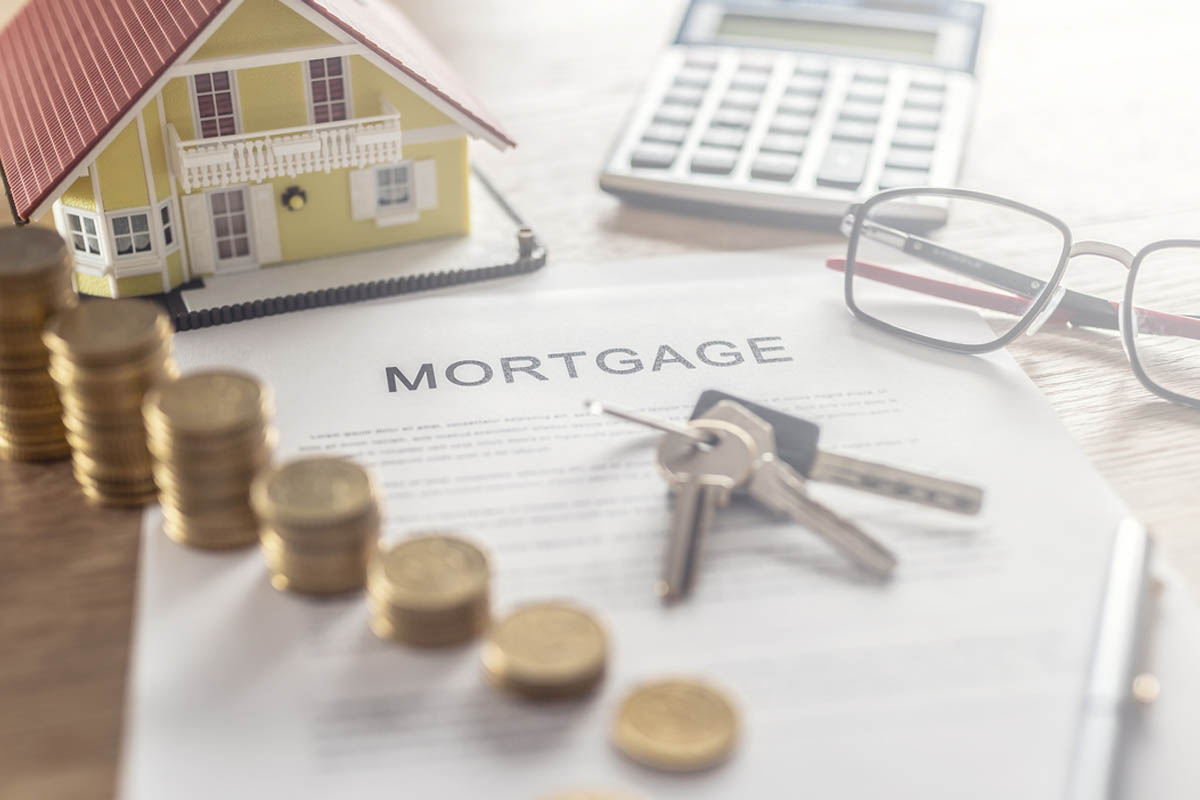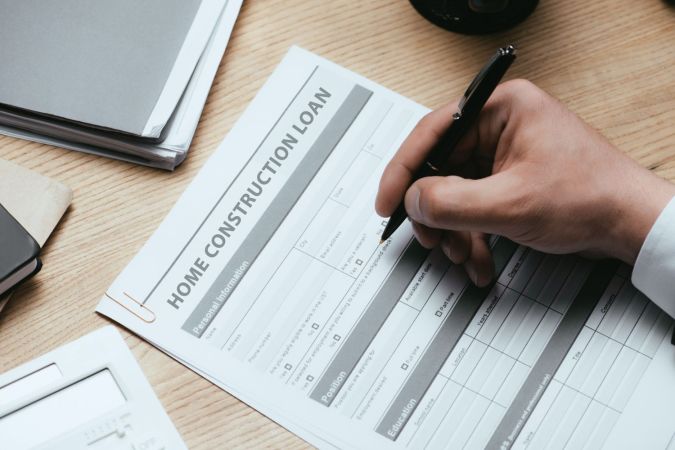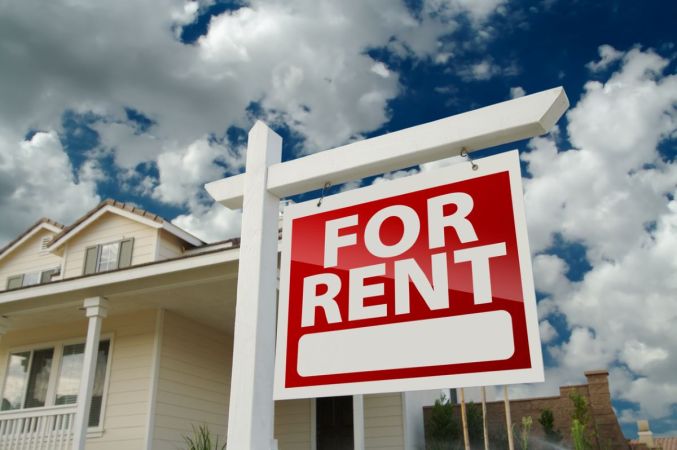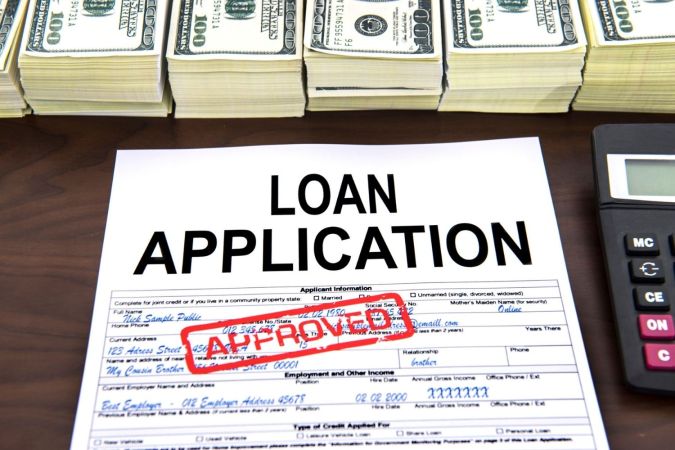We may earn revenue from the products available on this page and participate in affiliate programs. Learn More ›
Mortgage refinancing can help homeowners lower their monthly payments with a lower interest rate or pay off their mortgage faster with a shorter loan term. When it comes to refinancing, there are several ways homeowners can ensure they are getting the best loan and that they come to the process fully prepared. The following six steps can help homeowners determine if the refinancing process is right for them, find the best terms, and understand how to refinance a mortgage.
Before You Begin…

There are a number of reasons a homeowner might benefit from refinancing their mortgage. Some of the main reasons people look into refinancing include taking advantage of lower interest rates, shortening the loan term, or tapping into their home’s equity to help pay for home repairs or to pay off debt. Homeowners might also be able to get rid of FHA mortgage insurance through refinancing or add or remove someone from the loan.
However, it’s important to remember that taking out additional loans or applying for a new credit card during the refinancing process is not a good idea. Doing so can affect a homeowner’s credit score and make their debt-to-income ratio appear higher, which can make them appear riskier to a lender and could sabotage their chances of getting a good deal on a loan refinance.
Once a homeowner understands the ins and outs of refinancing, they can start to learn how to refinance a mortgage loan using these steps.
STEP 1: Assess your finances and set a goal.
If you want to learn how to refinance your mortgage, there is a lot of information out there. The first step in the process is for homeowners to assess the current state of their finances. Important information to assess includes credit score, monthly income, and debt-to-income ratio. These numbers can tell homeowners whether they can handle a higher mortgage payment in exchange for a shorter term, whether their credit score will qualify them for a lower interest rate, and whether their debt-to-income ratio will be considered too risky for mortgage lenders at the moment. By assessing their finances, homeowners can determine how soon to refinance a mortgage loan after taking out the original loan, or how often to refinance a mortgage if they are considering refinancing for a second time.
Another important piece of information for homeowners to assess is how much equity they have in their home. Homeowners who have 20 percent or more in equity may opt for a cash-out refinance that allows them to tap into some of their equity in order to help pay for home repairs and improvements, pay down high-interest credit card debt, or pay for medical bills or education. For homeowners who have enough equity in their home, or those whose home value has risen a significant amount since the purchase of the home, a cash-out refinance can be a good alternative to consider instead of a home equity loan, home equity line of credit (HELOC), or other type of home improvement loan.

STEP 2: Determine the type of refinance you want based on your goals.
Completing the first step helps the homeowner know where they sit financially. From there, homeowners can determine what type of mortgage refinance they want to opt for. A traditional refinance can help the homeowner lock in a lower interest rate or a shorter term to meet their financial goals. A cash-out refinance, as mentioned above, provides the homeowner with a lump sum of cash taken from the equity in their home, but it can often increase the monthly payment for the homeowner as a result.
A lesser-known type of mortgage refinance is called a cash-in refinance, where homeowners put down additional money when refinancing to boost the equity in the home, allowing them to access lower monthly payments or lower interest rates. Government-guaranteed mortgage loans (such as FHA, USDA, and VA loans) allow homeowners to refinance their existing loan to a new loan that has a net benefit to the homeowner, such as a lower interest rate. This type of refinance may be offered with few or no closing costs.
In order to determine their best refinance option, homeowners may want to talk to a lender to see what makes sense for their situation. Homeowners can also ask the lender questions like, “How much does it cost to refinance a mortgage?” so they can be prepared for any associated costs during the refinance process.
STEP 3: Get quotes from multiple loan providers to compare rates and terms.
The next step is for the homeowner to get quotes from multiple lenders to compare rates, terms, and fees. While the homeowner may be tempted to start with their current mortgage lender, there may be other options available with better rates, so it’s important for the homeowner not to simply settle for what they know. Homeowners can look at banks, credit unions, or companies that specialize in mortgage lending and request quotes from the ones that stand out. It’s important to research each lender before giving out any personal information to make sure they are legitimate. Homeowners can check these lending companies through the Better Business Bureau, consumer advocate groups such as Consumer Reports, or look at reviews online to get a well-rounded view. There are also numerous websites that compare mortgage rates and terms from multiple lenders side by side. Quotes also tend to be no-obligation and ideally, free. Be wary of any lender that wants a commitment up front.
Homeowners should understand the fees associated with refinancing a mortgage. Rather than searching “how much to refinance a mortgage” or “how much does it cost to refinance a mortgage,” homeowners can check during the quote process to see what fees each lender will charge. Refinances typically come with application fees, appraisal fees, closing costs, and more, so it’s important to take these fees into account to determine whether refinancing is worth it.
STEP 4: Gather your documents and apply for your chosen mortgage refinance.
Once the homeowner has determined which loan offers the most attractive rates and terms, it’s time to get their paperwork in order for the refinancing process. Homeowners should work closely with the lender to make sure all paperwork is on hand. Examples of documents homeowners may have to provide include check stubs or other proof of income, bank account information, tax returns, proof of identity, and more. After the homeowner has the necessary paperwork in order, they can then fill out and submit the application.
STEP 5: Prepare for the appraisal.
Most lenders require an appraisal for a mortgage refinance. In this process, an appraiser will come to the home to evaluate its condition and compare the home to similar ones in the area to determine how much the home is worth. There may be cases where a homeowner might not be required to get an appraisal to refinance; some FHA, VA, or USDA loans allow this requirement to be waived under certain conditions. Homeowners who have one of these three types of loans and are able to do a streamline refinance (which simplifies the approval process by requiring less documentation) will often be able to bypass the appraisal requirement as well.
If an appraisal is required, homeowners should prepare by fixing any issues that might affect the value of the home, including those from previous appraisals that lowered the value of the home, increasing curb appeal by landscaping the front yard, and repairing any minor issues that have appeared from regular wear and tear. Homeowners should also make sure they have any important information the appraiser might need, such as a list of upgrades that the homeowner has made to the property since purchasing it.

STEP 6: Close on the loan.
Often, closing on the loan simply means being available to sign the necessary paperwork. In some cases, the homeowner will travel to the lender’s office, but many lenders allow at-home closing where a notary public comes to the home to assist with closing. Homeowners will typically need proof of identification, and anyone connected to the loan, such as a spouse or partner, is generally required to be present.
A common question is in regard to the length of time it takes to close on a mortgage refinance, and homeowners may search “how long to refinance mortgage” or “how long does it take to refinance a mortgage?” to find out. The simple answer is that it varies from lender to lender, but in general it takes about 30 to 45 days. Homeowners can ask their lender when applying what the average closing time frame is to get a clearer idea of the process. It’s also important to know that mortgage refinances have a 3-day grace period in which homeowners can change their mind and cancel the loan, reverting back to their original mortgage. If they decide the loan is not the best option for them and don’t want to refinance after all, this grace period allows them to change their mind.
Homeowners searching for “how to know when to refinance your mortgage” can follow these steps and feel confident that they are choosing a mortgage refinance that works best for them. Homeowners start by clearly and thoroughly assessing their finances and comparing loans from a variety of lenders. By working closely with their chosen lender, homeowners can also make sure they have everything they need to complete the process. Remember, it’s important to find a reputable lender that doesn’t pressure anyone into a loan that is not right for them.








